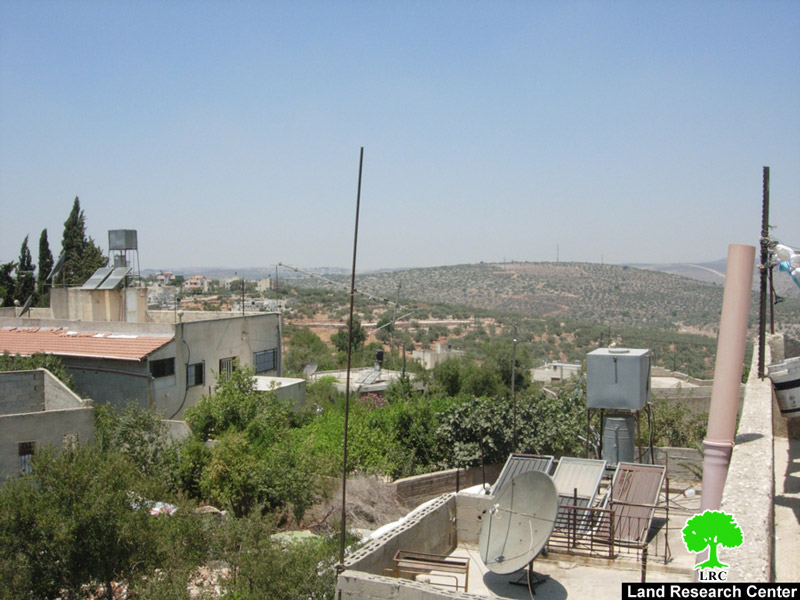The Violation: The uprooting of 15 olive trees in the town of Deir Istiya.
Date: 8th of April, 2010.
Violators: Israeli colonists from the colony of Immanu’el.
Owner of Trees: Mr. Qasem Naser Omar.
Details:
A number of Immanu’el colonists, located north of the town of Deir Istiya, carried out a series of attacks and violations against the Palestinians of the town. The main target of these attacks was the Palestinian olive tree.
The systematic attacks targeted the lands of the 48-year-old Mr. Qasem Naser Omar. The colonists used sharp tools to damage and cut a number of trees in the area while using an unknown chemical substance that leads to paralyzing the growth of the plant permanently upon its usage.
It is worth noting that targeting the olive tree, the expropriating of water springs and physical attacks against Palestinian farmers in Deit Istiya (especially in the area of Wadi Qana) has become a trend carried out by Israeli colonists in the area. For example, Mr. Omar has already been threatened to be killed and to be thrown out of his land by Israeli occupation soldiers in case he insisted to stay in his land. That is in addition to damaging the fences and trees planted by him to safeguard his land against the wild pigs that roam around freely in the area. Moreover, the electrical generator that he used to use to pump water from a water cistern located close to his land was damaged by the colonists. All these acts are aimed at forcing him out of his land.
Photo 1 & Photo 2: Israeli colonies spreading over the mountains surrounding Deit Istiya
Mr. Qasem Omar expressed the following to the Land Research Center’s field researcher: ‘ I have inherited the love of the land from my father and grandfather. The area of Wadi Qana is originally a part of Deir Istiya and it used to be filled with vegetables and springs. That was the case until the Israeli occupation of 1967 took place as it transformed the Wadi into a colonial block. Occupation authorities declared the Wadi to be a Nature Reserve as to limit Palestinian presence in the area. To enforce such status, Israeli occupation forces kept on harassing Palestinian farmers and arresting them for being present in their lands which led to the forced migration of a large number of the residents of the Wadi. The status of the Wadi as a Nature Reserve, however, did not stop the Israeli occupation authorities from allowing the establishment of 7 colonies in the area. That is in addition to a number of outposts spread throughout the area. These colonies and its associated outposts dump all of their sewage and wastewater into the Wadi leading to transforming it into a wasteland. A quick trip to the Wadi reveals the true extent of the tragedy; Israeli colonies are spreading atop the green hills surrounding the Wadi while Palestinian land owners are prevented from planting trees in their lands. As for me, I was kicked out more than once from my land. Even the barbwire that I have surrounded my lands with to prevent wild pigs from destroying my crops, it was removed by the Israeli forces as “it changes the status quo of the Wadi.” Despite all that, I am still present in my land which makes the Israelis very mad at me. They wouldn’t forego any chance to attack me, my land, my trees and even the water pump I use to water my plants with. They even threatened to kill me if I insisted on staying in my land. Yet, I am staying steadfast and won’t leave my land under any circumstances.’
Deir Istiya: Agony Caused by the Israeli Occupation.
The town of Deir Istiya is considered to be one of the largest towns in the Governorate of Salfeet. A number of other smaller towns and villages surround the town including Kafl Haris, Haris, Qarawet Bani Hassan, Qira, Zeita Jama’aein, Jinsafut, Azzun Al Shamaliya, Til, Siniria, Bidya and Immation. According to the Palestinian Central Bureau of Statistics (PCBS)’s 2007 census, around 4,000 Palestinians live in the town.
 Photo 3: An overview of the village of Deir Istiya
Photo 3: An overview of the village of Deir Istiya
The clans present in the town include Abu Hijla, Abu Faris, Sa’aed, Sahban, Salman, Aqel, Awad, Kajak, Makhalfa, Mansour, Abu Naser, Al Sheikh Abdulla, Al Qadi, Hakeem, Khateeb, Diab, Zeidan and Al ‘Araj.
Around 47% of the residents of the town depend on working in the public and private sectors while 13% work inside the Green Line. Another 24% depend on working in the agriculture sector (olives, almonds, cereals and citrus) as the main source of their income. A large number of water springs and cisterns are used by the farmers to irrigate their trees and crops. Water cisterns are present in all houses in the town while water networks provide the main source of drinking water.
The total area of the town is about 34,765 dunum of which 1527 dunums are used as the town’s built up area. Around 40%of the total area of the town undergoes colonial activities as a large number of colonies and outposts spread throughout the town like cancer.

